

Home
About Us
Allotments
Garden Equipment
Seed Suppliers
Manure Problems
Children's Pages
GLA Blog
Weather Blog
School Veg Patch
Useful Links
Wood Pigeon
Since we have had so much evidence of wood pigeon activity on the allotment site, I decided to see if I could find out a bit more about the largest member of the pigeon family.
Wood pigeons are large, heavy looking birds. They regularly break the branches of our jostaberries during their forays browsing the berries. They are mostly grey with a pinkish breast and a green, white and purple patch on the neck. They have a white band across the wings which can clearly be seen when the bird is in flight, and a dark band on the tail. Their eyes are bright yellow and legs and beak are pink.
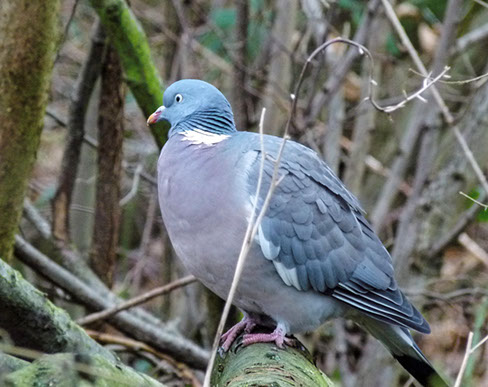
As they walk wood pigeons have a pronounced waddle rather like that of a penguin. When the bird takes to the air it makes a loud clattering noise and during flight the wings make a sound like the crack of a whip.
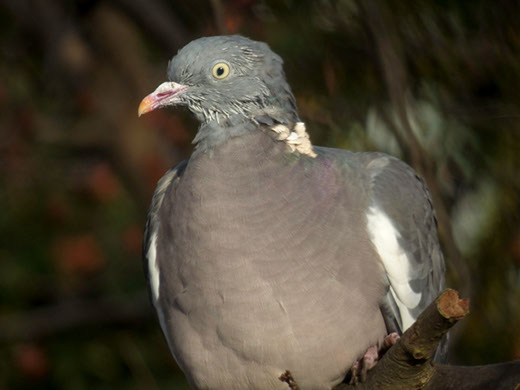
Young wood pigeons, (known as squabs), are browner, generally duller looking birds. They do not have the white patches on their neck which they begin to acquire at about 6 months old.
The call of the wood pigeon is a rather sleepy, husky sounding – coo-coo-coo, coo-coo. The call can be mistaken for a cuckoo.
Click in the sound icon to visit a web page where you can listen to a wood pigeon's call
Wood pigeons live in various habitats including woodland, parks, gardens and farmland.
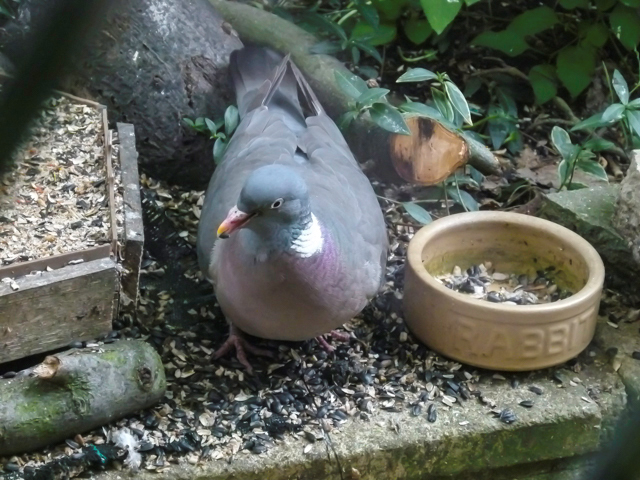
Wood pigeons will eat almost anything placed on a bird table especially large seeds and grains. Its feeding preferences however, often bring in into conflict with vegetable gardeners and farmers.
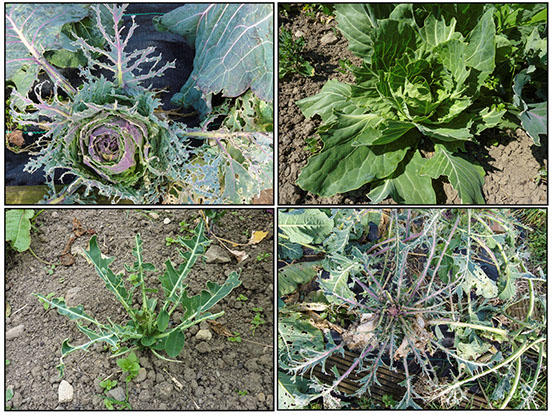
It will voraciously eat any young leaf growth in particular young, (or even well established) brassica, plants. With a hungry population of wood pigeons patrolling our allotment site, gardeners soon learn that diligent use of netting is called for. It also eats peas, grain, buds nuts, acorns and berries. Although it is mostly vegetarian it will occasionally take caterpillars or other invertebrates.
Wood pigeons do not get much moisture from their food and, therefore, do drink quite a lot. If you watch most birds drinking, they will scoop water up into their mouths and then throw back their heads so that the water runs down their throats. Wood pigeon however, use their beak to suck up water rather like using a straw.
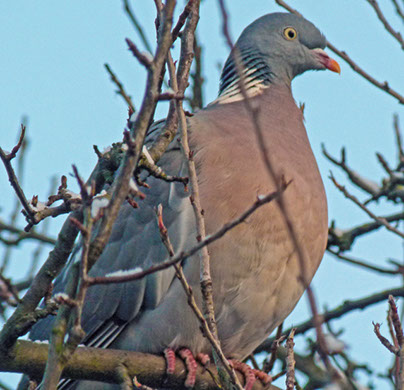 Wood pigeons build very simple nests in bushes or trees. These often only amount to a basic platform on which to lay their two white eggs. The eggs are very conspicuous, however, both male and female bird take turns at incubating the eggs and so they are rarely left uncovered and susceptible to nest robbers such as magpies. The young are fed on crop milk that is produced by both male and female parents. Although the birds only produce small clutches of eggs, they often have two or three broods in a year.
Wood pigeons build very simple nests in bushes or trees. These often only amount to a basic platform on which to lay their two white eggs. The eggs are very conspicuous, however, both male and female bird take turns at incubating the eggs and so they are rarely left uncovered and susceptible to nest robbers such as magpies. The young are fed on crop milk that is produced by both male and female parents. Although the birds only produce small clutches of eggs, they often have two or three broods in a year.
Apparently since the 1970’s there has been an over 666% increase in the number of wood pigeons in the UK. In the Big Garden Birdwatch run by the RSPB in January 2015, the wood pigeon was 5th overall and also in our area on the list of most frequently seen birds in the gardens of people participating in the count over “garden birdwatch” weekend.
In our garden, we regularly see a pair of wood pigeons taking take seed from our bird table and any that has spilled onto the ground. They swallow handfuls of whole peanuts but, as we don’t grow vegetables in the garden, they have as yet have caused no problem. Wood pigeons are fairly cautious and timid as they approach the bird table and take off noisily at the first sign of any movement or sudden sound. On the allotment site, however, it is a completely different story. Large groups of at least ten individuals have been counted browsing brassica patches. A local nursery also told me that the wood pigeons were devastating his lettuces. It is by no means a local problem as during visits to large estate gardens, we regularly see evidence of wood pigeon damage in their kitchen gardens.
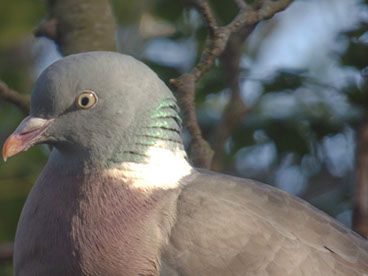
One web site claims that wood pigeons can be deterred by hanging up red cloths. We haven't tried this and so have no idea whether or not it works. Has anyone tried the red cloth method or any other successful methods of keeping the birds off your crops? We have resorted to covering crops using netting or enviromesh. I have also noticed fellow plotters using CDs on strings over crops but I have noticed this being very effective.
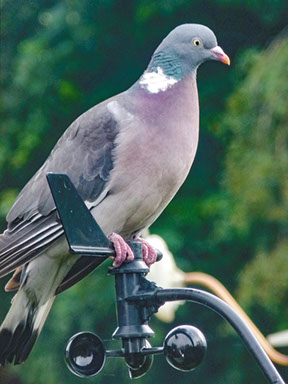
Our wood pigeons often perch on top of our weather vane and are happy to stay there in spite on the anemometer spinning round just below their feet so movement doesn’t appear to bother them. They also like to perch on the top of our summer house or other vantage points.
So what is causing these birds to have become so successful? Most evidence seems to point to the increase in intensive arable farming and in particular the growing of oil seed rape. This crops provides an over winter, plentiful food source for many brassica pests including wood pigeon. It bridges the gap at a time when shortage of food used to mean that many brassica pests died. Consequently gardeners have seen an increase in pest and disease problems associated with brassica growing.
Our Plot at Green Lane Allotments Blog | A Gardener's Weather Diary | School Vegetable Patch Website
© Our Plot on Green Lane Allotments - Please email me if you wish to use any of this site's content
